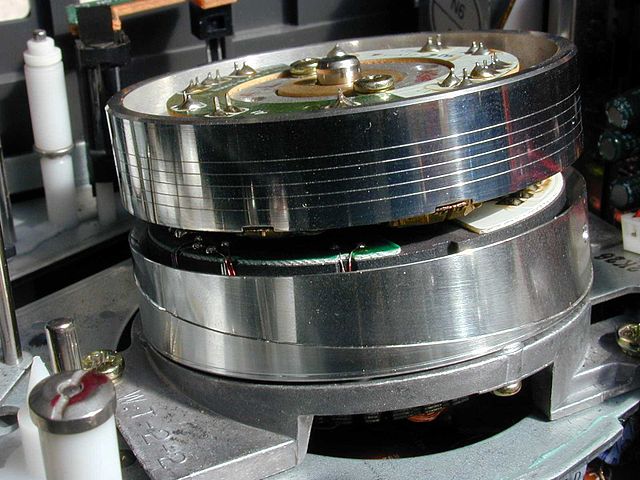The Compact Cassette, also commonly called a cassette tape, audio cassette, or simply tape or cassette, is an analog magnetic tape recording format for audio recording and playback. Invented by Lou Ottens and his team at the Dutch company Philips, the Compact Cassette was released in August 1963. Compact Cassettes come in two forms, either containing content as a prerecorded cassette (Musicassette), or as a fully recordable "blank" cassette. Both forms have two sides and are reversible by the user. Although other tape cassette formats have also existed—for example the Microcassette—the generic term cassette tape is normally used to refer to the Compact Cassette because of its ubiquity.
A TDK SA90 Type II Compact Cassette
Wollensak portable reel-to-reel tape recorder
Operating instructions for the Philips/Norelco Cartridge Tape Carry-Corder 150 (1964)
One of the first cassette recorders from Philips, the Typ EL 3302 (1968)
Magnetic tape is a medium for magnetic storage made of a thin, magnetizable coating on a long, narrow strip of plastic film. It was developed in Germany in 1928, based on the earlier magnetic wire recording from Denmark. Devices that use magnetic tape could with relative ease record and playback audio, visual, and binary computer data.
7-inch reel of ¼-inch-wide audio recording tape, typical of consumer use in the 1950s–70s.
Compact Cassette
A VHS helical scan head drum. Helical and transverse scans made it possible to increase the data bandwidth to the necessary point for recording video on tapes, and not just audio.
Small open reel of 9-track tape








